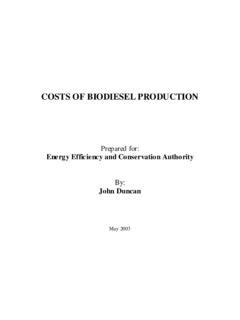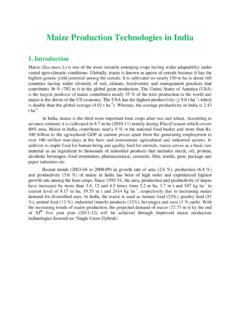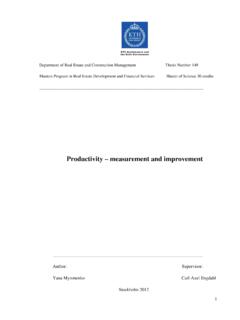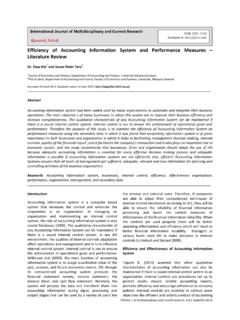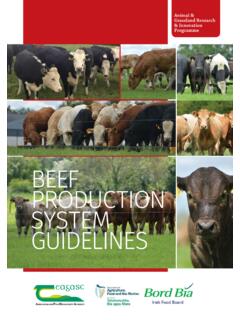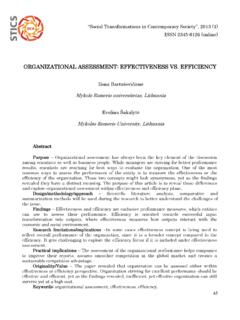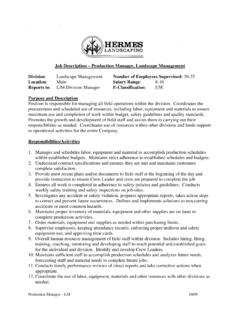Transcription of Financial Analysis Fundamentals - Corporate Finance Club ...
1 Financial Analysis the global team of CFI DorianDirector & InstructorNew YorkTim VipondCEO & InstructorVancouverJustin SandersInstructorLondonRyan SpendelowInstructorHong KongScott PowellDirector & InstructorVancouverCFI InstructorsVertical and Horizontal Income Statement objectivesPerform vertical and horizontal analysisBenchmark against other companies in the industryLearn the key components of the income analysisThere are many important steps, such as trend and ratio Analysis , in preparing a Financial Analysis . The starting point is the Financial statements: Income statement BalanceSheetStatement of Cash Flows analysisThere are many important steps, such as trend and ratio Analysis , in preparing a Financial Analysis .
2 The starting point is the Financial statements: Financial analysisInterpret Financial resultsTrend and ratio analysisFinancial statementsPyramid ratio analysisBasic ratio analysisUsing ratio of ratio analysisRatio Analysis covers two basic analysing the income statement, we use performance ratios specifically those related to analysisPerformance ratiosFinancial leverage ratiosProfitability ratiosEfficiency breakdown of the income statementTenselIncome statement$ millionsYear 1 Year 2 Year 3 Year 4 Sales revenues81,42284,69888,23690,637 Sales revenuesCOGS/COS(38,121)
3 (37,756)(36,327)(42,938)Direct costsGross profit43,30146,94251,90947,699 Gross profitResearch and development(5,884)(6,421)(7,893)(6,812)R esearch & developmentMarketing(23,507)(26,569)(29, 732)(30,009)MarketingSales(1,764)(1,931) (2,530)(2,563)SalesGeneral and administration(2,960)(2,803)(2,762)(2,94 7)General & administrationEBIT (operating profit)9,1869,2188,9925,368 Income from opsInterest(1,073)(1,102)(1,147)(1,182)I nterest inc/expTaxes(2,761)(2,429)(2,193)(1,764) TaxesNet income5,3525,6875,6522,422 Net incomeSales revenues are the most important components of the income statement and are used in several of the ratios seen throughout the of good sold relates to direct labor and raw materials needed to create the product or service that is being sold, as well as depreciation on manufacturing equipment used in profit tells us what the gross margin is before we take into account any other costs needed to keep the company expenses are those required to keep the company going.
4 The most common are: research & development, marketing, sales, and general & income is used to pay the government, creditors, and ultimately the income is the final part of the income statement and represents what is remaining to be paid to the analysisNet incomeSalesTaxSalesOperating incomeSalesOperating costsSalesGross profit SalesR&DSalesPersonnel costsSalesSellingcostsSalesAdmin costsSalesLabor costsSalesMaterial costsSalesWork profit marginThere are three key profitability ratios:Gross profitSales= profit marginEBITS ales= profit marginNet incomeSales= ratioThe tax ratio is the efficiency ratio that demonstrates how well managing tax.
5 Tax expensePre-tax income= ratioThe interest coverage ratio tells us whether the company will be able to cover what it owes in interest to its (DA)Interest expenses= analysisTenselIncome statementCAD millionsYear 1 Year 2 Year 3 Year4 Year 5 Sales revenues81,42284,69888,23690,637 Sales revenuesCOGS/COS(38,121)(37,756)(36,327) (42,938)Direct costsGross profit43,30146,94251,90947,699 Gross profitResearch and development(5,884)(6,421)(7,893)(6,812)R esearch & developmentMarketing(23,507)26,569)(29,7 32)(30,009)MarketingSales(1,764)(1,931)( 2,530)(2,563)SalesGeneral and administration(2,960)(2,803)(2,762)(2,94 7)General & administrationEBIT (operating profit)9,1869,2188,9925,368 Income from opsInterest(1,073)(1,102)(1,147)(1,182)I nterest inc/expTaxes(2,761)(2,429)(2,193)(1,764) TaxesNet income5,3525,6875,6522,422 Net incomeUse calculations from the past five years to perform trend Analysis and predict future of horizontal analysisAre margins rising or failing?
6 Is performance improving or declining?What is causing margins to fall?Are margins impacted by indirect costs? competitor/Industry averageYour companyThere are different ways to benchmark: Compare your company to two or more competing companies Compare your company s ratios to the industry of benchmarking informationWhere can you find a competitor s statements? Three key online sites including EDGAR, SEDAR and RNS Competitors investor relations websitesHistorical ratios for companies can be found on MSN Money and Google Finance , but allow very little control over the information and provide little insights on the calculation of sources such as Bloomberg, Capital IQ, and equity research reports provide detailed information but are more statement Analysis is just the first step to the overall analysisUse vertical and horizontal Analysis , as well as benchmarking.
7 To maximize your company s performanceUnderstand past performance, to predict future better investment and credit decisions from outside the companyBalance Sheet and Leverage objectivesUse the balance sheet to determine how efficiently a company is being runDetermine the Financial strength of a company by analyzing the balance analysisThere are many important steps, such as trend and ratio Analysis , in preparing a Financial Analysis . The starting point is the Financial statements: Income statement BalanceSheetStatement of Cash Flows analysisThere are many important steps, such as trend and ratio Analysis , in preparing a Financial Analysis .
8 The starting point is the Financial statements: Financial analysisInterpret Financial resultsTrend and ratio analysisFinancial statementsPyramid ratio analysisBasic ratio analysisUsing ratio analysisSalesTotal AssetsSalesCapital AssetsSalesWorking AssetsSalesOther FASalesInventorySalesLand & buildingsSalesPlant & of ratio analysisRatio Analysis covers two basic groups:Ratio analysisPerformance ratiosFinancial leverage ratiosProfitability ratiosEfficiency ratiosLiquidity ratioSolvency term liquidity ratiosCurrent ratioQuick ratio Generic rule of thumb is 2:1 Accounts receivable InventoryCashPrepaid ratio or acid test ratio Generic rule of thumb is 1 turnover ratio Tells us:How efficient is the company in using assets to generate revenue?
9 For every 1 dollar of assets, how many dollars of revenue the company generates? use trend Analysis to determine: What are the ratios doing? Are they improving or deteriorating?Short term liquidity ratios are an early warning signal to cash flow capital overviewWorking capitalCurrent Asset Current capital overviewWorking capitalInventoryReceivablesPayablesOpera ting capital overviewWorking capitalAccounts receivable+Inventory-Accounts payableOperating capital funding gapCompany buysinventoryCompany paysFor inventoryCompany sellsgoodsCustomer paysfor goodsCash outCash inPayablesInventoryReceivableWorking Capital Funding capital funding gapCompany buysinventoryCompany paysFor inventoryCompany
10 SellsgoodsCustomer paysfor goodsCash outCash inPayablesInventoryReceivableWorking capital funding gapWhat would happen to the workingcapital funding gap? capital funding gapCompany buysinventoryCompany paysFor inventoryCompany sellsgoodsCustomer paysfor goodsCash outCash inPayablesInventoryReceivableWorking capital funding gapDelay companyPaymentsFaster customerPayments Just-in-time working capital efficiency ratiosRatios for each2 Inventory, Accounts receivable, Accounts payable+Working capital efficiency 365 Inventory turnover ratioInventory days ratioInventory efficiency receivable.


